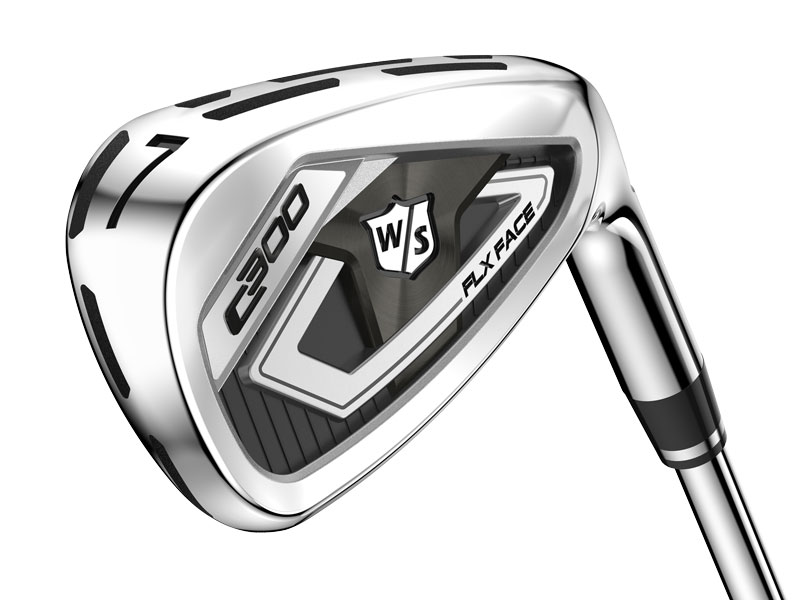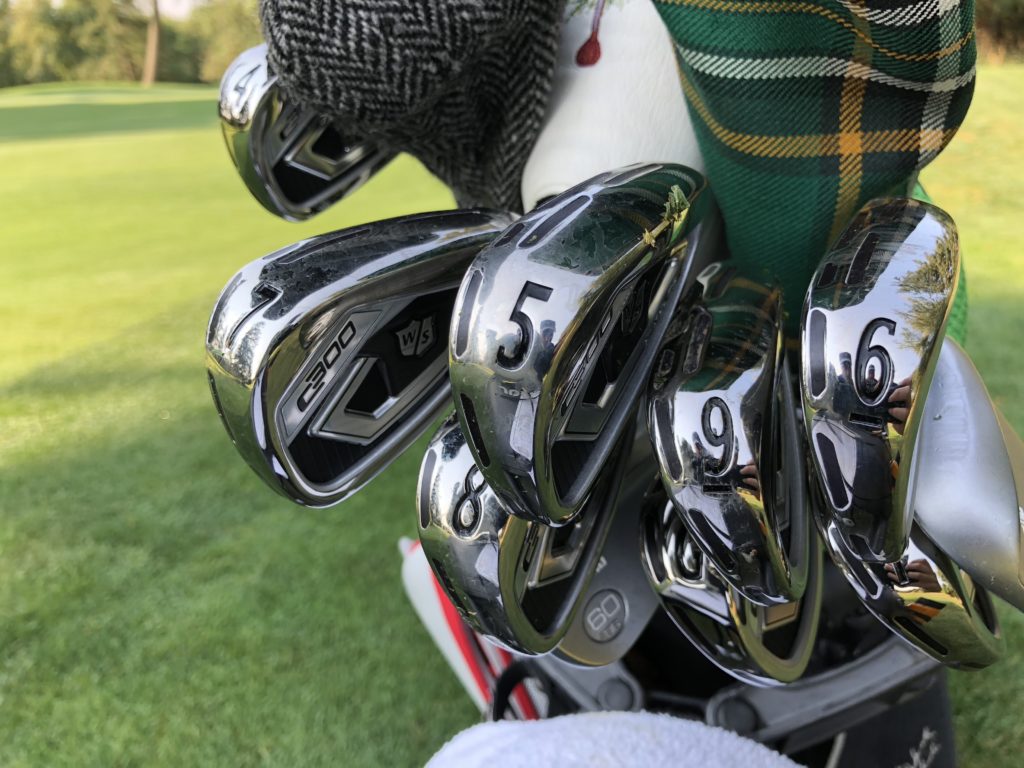Recently I received a set of new Wilson C300 irons to review.
I was really excited to get my hands on them, mostly because it’s the first time in about a year and a half I had the chance to go back to playing game improvement irons. I’ve been gaming the JPX-900 irons for awhile, and generally I love them.
But I’ll be honest, I’m not a consistent golfer. When I’m playing well, those things feel like a Ferrari. I can point the car exactly where I want, and it goes.
But when I’m not playing well, it can feel like driving a 600hp, real wheel drive car in a rain storm.
Not that, I’d know what that feels like, but let’s just say they aren’t the most forgiving clubs in the world.
So now I’ve played three rounds with these Wilson C300 clubs, and there’s a lot to like about them. In this review I’ll give you the full run down of my experience and try and help you decide if these are a good fit for where you’re at in your golf journey.
First Impressions of the Wilson C300 Golf Clubs
A couple years ago, Wilson unveiled it’s Power Hole Technology, which is supposed to help you hit the ball farther, achieve greater ball speeds, and do it all more consistently (this marketing pitch feels familiar).
In their own words, Power Hole technology is “urethane filled through holes strategically positioned around the face of the club, which minimizes the contact between the body and the face while providing maximum flex and an expanded sweet spot.”
When you pick these up, these Power Holes are one of the first things you notice. The clubs have a a nice chrome finish, that look good, although I personally tend to prefer a more matte finish on my clubs.
I was surprised at just how much bigger they feel and look compared to my current irons.
The C300 would fall into the category of “Game Improvement” irons. They aren’t” “Super Game Improvement irons” ( the D300 fills that spot in Wilson’s lineup), but they don’t feel like as much of a Players iron as the Mizunos feel.
Frankly, they feel like a good combo of an upgrade from your first set of beginner clubs, yet still still forgiving enough to help you where you need it.
Upon getting it out to the range, I was pleased with how easy these irons were to hit. Across the range, it was easy to hit the ball high and far.
The stock shafts are KBS Tour 90, which felt solid, but a little too light for my preference. That said, this is one more area where it could be a great club for someone who is a 15-20 handicapper who is looking to improve their game enough to jump into single digit territory.
If you’re a better golfer looking at these, I’d see if you can bump the shafts up to the Tour 105.
Wilson C300 Performance
Ok, so we know they’re easy to hit.
We know that they’re pretty forgiving.
We know that it’s a good club for the advanced beginner to intermediate golfer.
But how does it truly perform across it’s range?
Well, my answer for this stayed consistent from my first few balls on the driving range, all the way through my 4th round with the clubs.
One of the things I like the most about them are the 4-5 irons.
They’re pretty beefy, and easy to hit straight and with solid distance.
The C300 are so much more forgiving than my Mizunos. And for someone who isn’t very consistent to begin with this alone could save me 5 strokes during a less than stellar round.
My least favorite club is my 4 iron currently, yet with these I was stroking them 200+, in part due to the confidence the increased head size brought.
However, on the other end of the spectrum, I wasn’t so impressed.
Once you got down to the gap wedge and pitching wedge, these things felt huge. With my current wedges, I feel like at any given time I have the power to drop the ball exactly I want it to go.
These were so big that I never really was able to get a feel for them, or gain any confidence on approach shots.
Sure they’re easier to hit and more forgiving than what I have, but when it came to accuracy, these felt a bit lacking.
Here’s how I’d describe this:
If you struggle to even hit greens from within 125 yards, then this club will help you do that.
But if you’re able to hit decent approach shots, and you want something that will help you hit specific parts of the green, these won’t provide the feel necessary to do that.
This becomes less of an issue as you work your way from gap, back down through the range. As once you get into 7 irons or lower, the added consistency you’ll gain will be really valuable.
The Lamkin Crossline grips that ship with it are great, and I don’t think you’ll have any issues with them.
Bottom line is, if you’re someone who prioritizes distance and forgiveness – you’re going to love these clubs.
If you’ll forgo those a bit in favor of workability, feedback, and feel? Then these won’t be the clubs for you.
Final Thoughts on the Wilson C300
Overall, I think these clubs are a great fit for the right person.
While I think technically these and the JPX-900 from Mizuno would be competitors (probably more so the JPX Hot Metal variety, as opposed to the Forged I reviewed) – the Mizuno’s feel better for a more advanced golfer.
These Wilson’s are a great step up for someone who is starting to get the hang of the game, and needs increased performance, without completely sacrificing forgiveness.
The 4- 9 iron is fantastic, and I really felt an increase in confidence on my longer irons. But, unless you’re someone who really struggles making clean contact on approaches, I’d probably consider looking elsewhere for a decent set of wedges to pair with the irons.
All that said, Wilson has come a long way with their equipment over the last few years. I’d always kind of considered them to be the clubs you’d go pick up off the rack at a BIG5 or some other budget sporting good store. That said, they’ve proved with the C300 range that they know how to make a very capable set of irons that can help whisk players into the next tier for their game.


